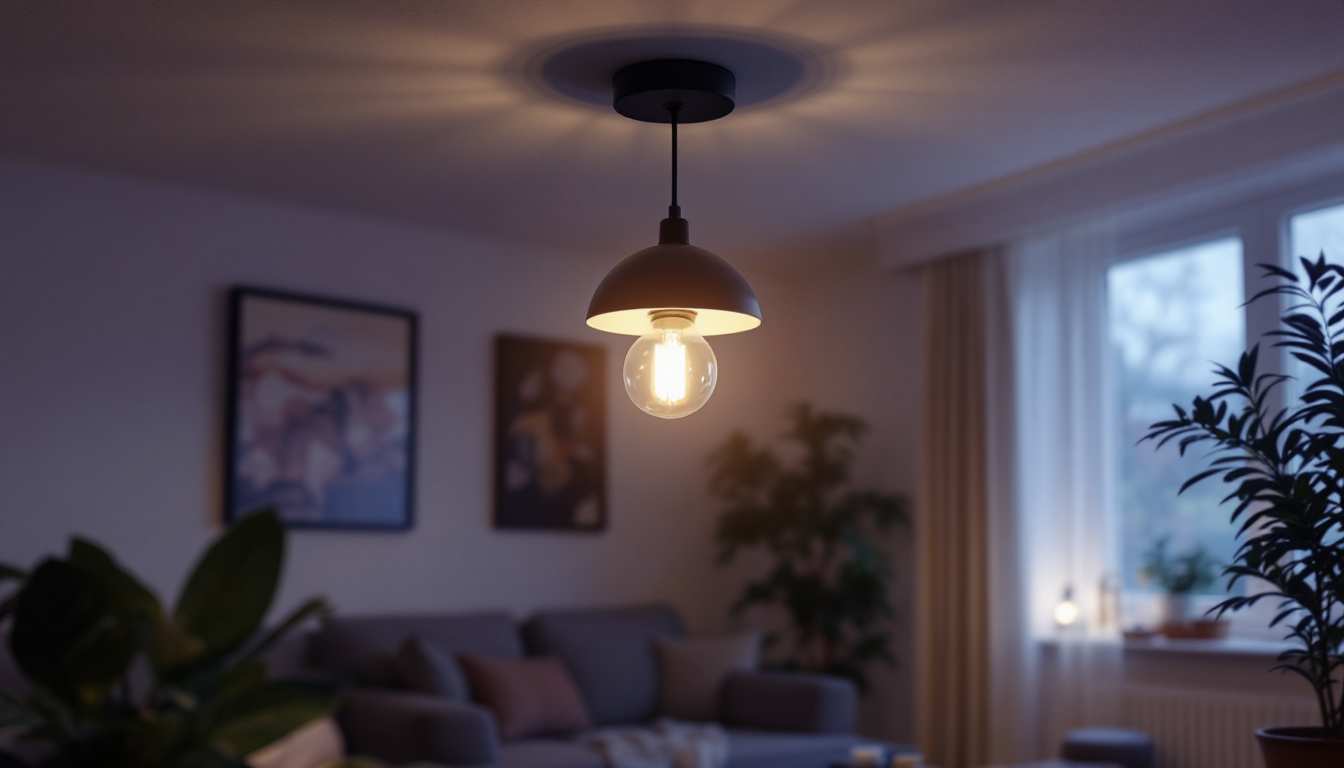
Lighting is a crucial aspect of any commercial or residential space, and the role of lighting contractors is pivotal in ensuring that these environments are well-lit and aesthetically pleasing. However, the path to successful lighting installation is often fraught with challenges. This article explores how lighting contractors can sidestep common pitfalls and deliver exceptional results for their clients.
Proper lighting goes beyond mere visibility; it influences mood, productivity, and even safety. For lighting contractors, understanding the nuances of different lighting types and their applications is essential. This knowledge not only enhances the quality of work but also builds trust with clients. The right lighting can transform a space, making it feel more inviting and functional, while poor lighting can lead to discomfort and dissatisfaction. Therefore, investing time in understanding the psychological effects of lighting can significantly impact the success of a project.
There are three primary types of lighting: ambient, task, and accent. Ambient lighting provides overall illumination, task lighting focuses on specific areas for activities, and accent lighting highlights particular features. Each type serves a unique purpose, and knowing when to use them is vital for creating a balanced lighting scheme. For instance, in a kitchen, ambient lighting can be achieved through ceiling fixtures, while under-cabinet lights serve as task lighting for food preparation. Accent lighting can be used to showcase artwork or architectural details. Understanding these distinctions allows contractors to tailor their approach to each project.
In addition to these primary types, it’s important to consider the color temperature of the lights used. Warmer tones can create a cozy atmosphere, perfect for living areas and bedrooms, while cooler tones are ideal for workspaces as they promote alertness and concentration. The strategic use of dimmers can also enhance versatility, allowing spaces to shift from bright and functional to soft and relaxing, depending on the time of day or occasion. This level of detail not only improves the functionality of a space but also elevates the overall aesthetic, making it more appealing to clients.
Effective communication with clients is crucial in managing expectations. Lighting contractors should engage in thorough discussions with clients to understand their needs, preferences, and budget constraints. This dialogue helps in crafting a lighting plan that aligns with the client’s vision while also considering practical aspects like energy efficiency and maintenance. Additionally, being knowledgeable about the latest lighting technologies, such as LED options and smart home integration, can provide clients with innovative solutions that enhance their experience.
Moreover, presenting clients with visual aids, such as mood boards or 3D renderings, can facilitate better understanding and decision-making. When clients feel involved in the process, they are more likely to be satisfied with the final outcome. Regular updates and check-ins throughout the project can also foster a sense of partnership, ensuring that any adjustments can be made promptly. This proactive approach not only builds rapport but also reinforces the contractor’s commitment to delivering a product that meets or exceeds client expectations, ultimately leading to positive referrals and repeat business.
Despite the best intentions, lighting contractors often encounter various challenges during projects. Identifying these issues early can help mitigate their impact and ensure a smoother workflow.
One of the most significant issues contractors face is inadequate planning. Rushing into a project without a comprehensive plan can lead to oversights, such as improper fixture placement or insufficient lighting levels. It is essential to conduct a thorough site assessment and develop a detailed lighting design that considers all aspects of the space.
Creating a checklist that includes factors like room dimensions, existing electrical infrastructure, and the intended use of the space can help streamline the planning process. By addressing these elements upfront, contractors can avoid costly mistakes down the line. Furthermore, engaging with clients to understand their vision and preferences can lead to a more tailored lighting solution that enhances the overall ambiance and functionality of the area. This collaborative approach not only boosts client satisfaction but also minimizes the likelihood of revisions during the installation phase.
Electrical problems can arise unexpectedly, causing delays and additional expenses. Issues such as outdated wiring, insufficient circuit capacity, or non-compliance with local codes can hinder a project’s progress. Lighting contractors must ensure that all electrical work is performed according to regulations and that the existing infrastructure can support the new lighting system.
Regular collaboration with licensed electricians can help identify potential electrical issues before they become problematic. This proactive approach allows contractors to address any concerns early, minimizing disruptions during installation. Additionally, staying updated on the latest electrical standards and technologies can empower contractors to make informed decisions, ensuring that their installations are not only safe but also efficient. This knowledge can also open up opportunities for energy-efficient solutions that may appeal to environmentally conscious clients.
Staying within budget is a common challenge in the lighting industry. Unexpected expenses can arise from various sources, including the need for additional materials, labor costs, or unforeseen complications. To prevent budget overruns, lighting contractors should establish a realistic budget at the outset and include a contingency fund for unexpected expenses.
Transparency with clients regarding potential costs is also essential. Providing detailed estimates and regular updates on project expenses can help manage client expectations and foster trust. Moreover, implementing project management software can streamline budgeting processes by tracking expenses in real-time and allowing contractors to adjust their plans as needed. This technology not only aids in maintaining financial control but also enhances communication with clients, as they can be kept in the loop about budget status and any necessary adjustments throughout the project lifecycle.
To navigate the complexities of lighting installation, contractors can implement several strategies that promote efficiency and quality.
Continuous education is vital in the ever-evolving field of lighting design and technology. Lighting contractors should invest in training programs that cover the latest trends, technologies, and best practices. This commitment to professional development not only enhances skills but also positions contractors as knowledgeable experts in the field.
Additionally, staying informed about new products and innovations can help contractors offer cutting-edge solutions to their clients. Attending industry conferences, workshops, and trade shows can provide valuable insights and networking opportunities.
Incorporating technology into the design and installation process can significantly improve efficiency. Software tools for lighting design can help contractors visualize their plans and make adjustments in real-time. These tools allow for precise calculations of light levels, energy consumption, and fixture placement, minimizing errors during installation.
Moreover, using project management software can streamline communication, scheduling, and budgeting. By harnessing technology, contractors can enhance their workflow and deliver projects more effectively.
Using high-quality materials is essential for ensuring the longevity and performance of lighting installations. Contractors should prioritize sourcing fixtures and components from reputable manufacturers. While it may be tempting to cut costs with cheaper alternatives, investing in quality materials can prevent issues such as premature failure or maintenance headaches.
Educating clients about the benefits of quality products can also help justify budget considerations. When clients understand the value of durable and efficient lighting solutions, they are more likely to appreciate the investment.
Establishing and maintaining strong relationships with clients is a cornerstone of success for lighting contractors. Positive client interactions can lead to repeat business and referrals, which are invaluable in a competitive market.
After project completion, follow-up communication is crucial. Contractors should reach out to clients to ensure satisfaction with the work and address any lingering concerns. This proactive approach demonstrates professionalism and commitment to quality.
Additionally, soliciting feedback can provide valuable insights into areas for improvement. Understanding client experiences can help contractors refine their processes and enhance service delivery.
Word-of-mouth referrals are one of the most effective marketing strategies for lighting contractors. Implementing a referral program can incentivize satisfied clients to recommend services to others. Offering discounts or rewards for referrals can motivate clients to share their positive experiences.
Moreover, showcasing successful projects on social media and professional platforms can attract new clients. Highlighting testimonials and case studies can build credibility and showcase expertise in the field.
The lighting industry is continually evolving, with new technologies and design trends emerging regularly. Staying ahead of these trends can give contractors a competitive edge and enhance their service offerings.
With growing awareness of environmental issues, energy-efficient lighting solutions have become a priority for many clients. Contractors should familiarize themselves with the latest energy-efficient technologies, such as LED lighting and smart controls. These solutions not only reduce energy consumption but also appeal to eco-conscious clients.
Incorporating sustainable practices into the installation process can also enhance a contractor’s reputation. Using recyclable materials and minimizing waste during installation are steps that demonstrate a commitment to sustainability.
The rise of smart home technology has transformed the lighting landscape. Clients are increasingly interested in automated lighting systems that offer convenience and customization. Lighting contractors should stay informed about smart lighting products and their integration into existing systems.
Offering clients the option to incorporate smart technology can enhance their overall experience and satisfaction. Providing education on how to use these systems effectively can further solidify a contractor’s role as a trusted advisor.
Lighting contractors play a vital role in shaping the environments in which people live and work. By understanding the importance of proper lighting, anticipating common issues, and implementing effective strategies, contractors can elevate their services and deliver outstanding results.
Building strong relationships with clients and staying informed about industry trends are essential components of long-term success. As the lighting industry continues to evolve, contractors who prioritize quality, communication, and innovation will be well-positioned to thrive.
Ready to enhance your lighting projects with superior quality and value? Look no further than LumenWholesale. Our extensive range of spec-grade lighting products is designed to meet the highest industry standards, ensuring that your installations shine with reliability and performance. Say goodbye to inflated markups and hello to unbeatable wholesale prices, free shipping, and the convenience you deserve. Elevate your lighting game and make your next project a glowing success with Wholesale Lighting at the Best Value. Experience the LumenWholesale difference today!

Discover innovative cost-saving strategies for lighting contractors using solar panels for outdoor lighting.

Discover innovative hacks for smart lighting contractors to optimize light bulb lumens and enhance energy efficiency.

Discover how small ceiling lights can transform spaces while boosting profitability in lighting installations.

Discover the essentials of Type S Light technology in this comprehensive guide tailored for lighting contractors.